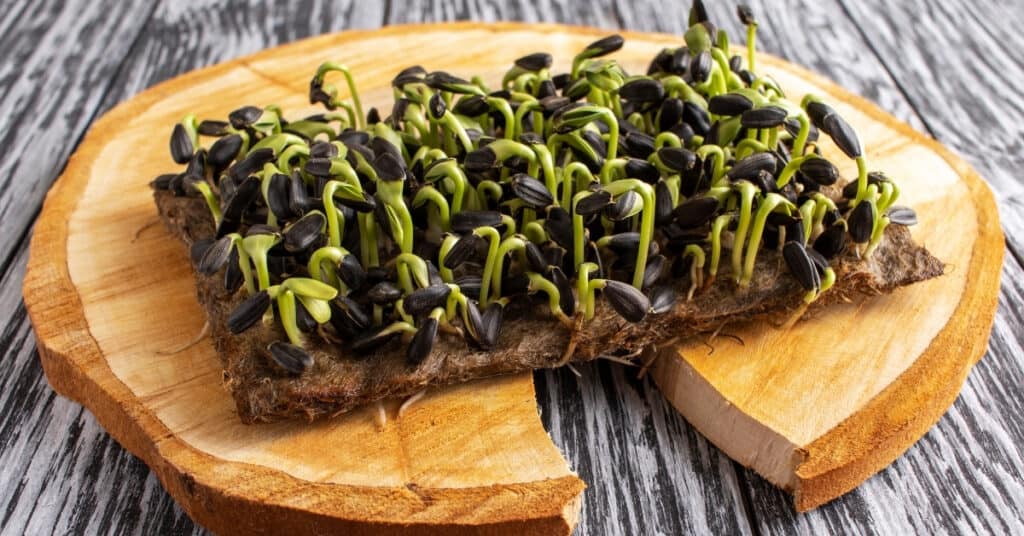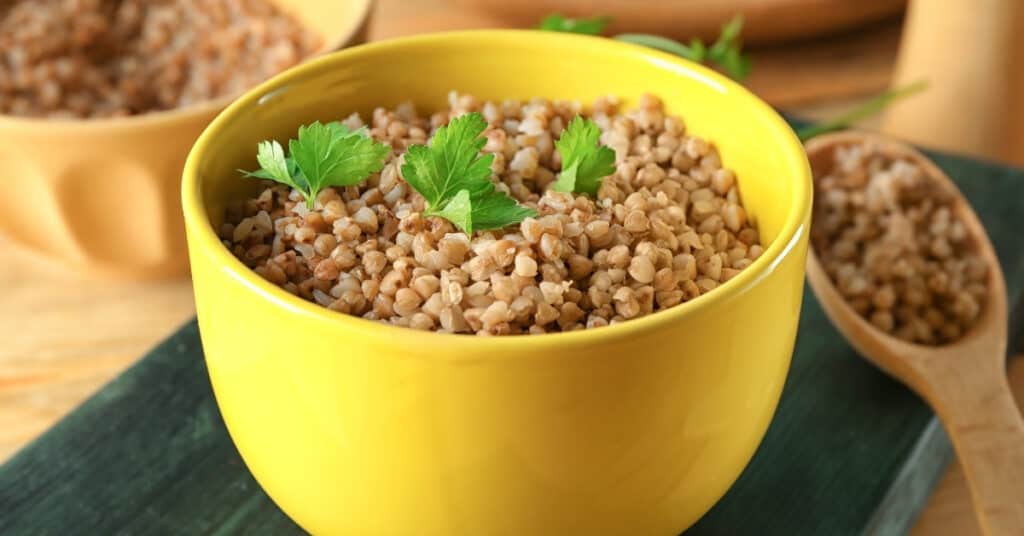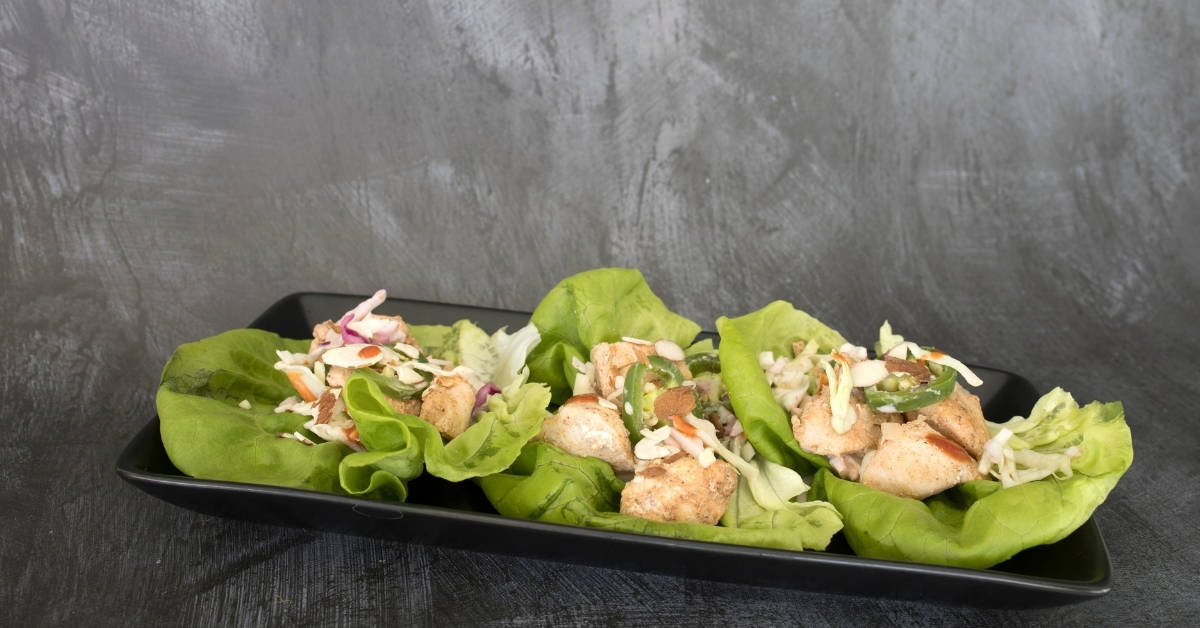If you are curious about microgreens for beginners and you are ready to give them a try, you have come to the right place.
The road to healthy eating is lined with microgreens. Packed with a concentrated volume of nutrients and more flavor than you’d expect, in recent years, microgreens have been embraced as a great tasting accent to any dish.
Let’s explore why microgreens are in such high demand, and why we’ve made these 5 top picks for microgreens with the best flavor, health benefits, and more.
Exploring Microgreens
It’s an easy guess just from the name – microgreens are a smaller, immature version of leafy plants. Why would foodies want to eat younger versions of these plants instead of their hearty adult versions?
As it turns out, microgreens are incredibly nutritious, palatable, and for a majority of varieties, easy to grow. Here’s what makes microgreens unique, and why they’re qualified for superfood status.
Microgreens: A Popular Healthy Option
You can think of them as seedlings related to, but not the same as, a sprout. Most vegetables, flowers, grasses, and wheat grow through a microgreen phase.
At this stage of a plant’s life, it’s rich with nutrients because all of the vitamins and antioxidants are there to help it flourish into a healthy, mature plant. That means microgreens are primed with most, if not more, of the nutrients that are found in their mature versions.
Here’s a peek into the unique benefits that microgreens can offer, from Are Microgreens Worth the Splurge?:
“According to Brendan Davison, author of The Microgreens Cookbook, the trendy veggies are four to 40 times more nutrient-dense than their mature leaf counterparts, and they are 100 percent bioavailable. That means your body can absorb all the nutrient content, which may not be the case for similarly nutrient-dense vitamin supplements.”
So, microgreens have it all: they’re appetizing, look attractive for both eating and garnish, and no one can dispute the health benefits they bring to the table.
The baseline of all microgreens is that many are almost, if not more than, healthier than their adult counterparts. If you’re thinking, “Sign me up!” we’re going to explore the benefits of a few microgreens that are perfect for beginners. So, when you’re ready to try out these popular young veggies, start with the recommendations below.
1. Sunflower Microgreens – Versatile Flavor

Like many amazing foods that grace the plates of avant-garde restaurants, microgreens can be an acquired taste.
Sunflower microgreens are a great place to start because their taste is mild enough to be agreeable but tasty enough to be enjoyed. They’re described by many as having a nutty, mild flavor. Because of this, sunflower microgreens find their way into many recipes, complementing several flavor profiles.
Just as an example, consider how Chinese, Vietnamese, or Thai cuisines would pair with sunflower microgreens; specifically, imagine a satay bowl sprinkled with these shoots – you can’t go wrong by adding a crunchy, nutty veggie to a saucy or spicy dish.
As mentioned above, all microgreens are very healthy because they’re full of vitamins and minerals, and likely more nutritious than their adult counterparts.
Once you’ve tried these easy-to-swallow seedlings, you may be ready to explore other flavorful varieties. Just think about most of the veggies you eat, and here’s a fun fact: you can likely try your favorite leafy green vegetables, herbs, and edible flowers as microgreens. We’re going to explore a few more, so read on.
So, if you’re trying microgreens for the first time, there’s nothing wrong with dipping your toes in at first and keeping it simple. Sunflower microgreens will likely be your gateway seedlings to loving the world of microgreens.
2. Amaranth – Attractive, Delicious
When new, colorful, and tasty veggie seedlings began to appear on diners’ plates, they knew that artistic chefs were on to something. If you think of yourself as an amateur gourmet, you know that aesthetics are almost as important as the meal itself, and you don’t have to be a professional chef to get it right.
Topping, mixing, or cooking microgreens into your dishes is an easy and all-natural way to give your meal that extra bit of visual pop. That’s where the amaranth comes in.
Fully grown, amaranth is a deep red flowering plant that has a place in botanical gardens and in salad bowls (their grains are a lesser-known rival of quinoa).
As “infants,” amaranth microgreens have brilliant pink shoots and the same deep red leaves as their adult versions. So, picture salad, crab cakes, or even a slab of steak ornamented with a few sprigs of hot pink amaranth shoots and enhanced by their mild, sweet flavor.
These seedlings will be perfect for showing off your food presentation skills, and of course, there are other colorful microgreen options aside from amaranths.
As a bonus, check out the beautiful purple kohlrabi microgreens and see if you’d like to incorporate them onto your microgreens pallet. Adding colorful plant shoots to your ingredient repertoire will undoubtedly elevate your meals from plate to perfection.
3. Lettuce Microgreens – Fast Growing
When growing most microgreens, especially the popular varieties, you don’t have to wait a full season for them to be ready for consumption. On average, most shoots can be harvested within 10-to-15 days of planting – but lettuce microgreens aren’t typically among this group.
If you’re interested in growing your own microgreens, go ahead and crack out your trays, because these plants can be ready to eat in as little as 8-13 days. As a side note, in most cases, experts advise that you go by the height of your plants rather than the day count, and this will be between 2 ½ to 4 inches tall.
Nevertheless, the growing speed doesn’t sacrifice the ease of planting and growth management. Later, we’ll go into detail on how to grow most microgreens, but the basics are:
- Grow the seeds in a flat bed of soil.
- For the first few days, cover the seeds to protect them from sunlight.
- Mist them occasionally to keep them from drying out, and check for mold.
- After 2-3 days, when the seeds have grown half an inch or so, remove the lid to let them breathe and come into their own for the next 8-13 days – or in the case of lettuce, the next 6-11 days.
As an added plus, the fact that lettuce is the popular choice for any regular salad doesn’t hurt when trying a simple recipe. With growing rates this fast, you could make lettuce microgreens a part of your daily diet.
4. Buckwheat – Nutrient Powerhouse
In the last few years, buckwheat has been lauded as an affordable superfood and viable option for a gluten-free diet, so you’re likely already aware of its heavyweight influence on other diets, juices, and smoothies. Let’s get down to the raw facts about why buckwheat microgreens pack a punch.

Buckwheat contains vitamins A, B2, B3, C, and E, which promote the health of your vision, metabolism, and immune system. It provides antioxidants that are beneficial for the body on a cellular level. But actually, many microgreens offer ample amounts of these same vitamins and antioxidants.
What makes buckwheat so special is the fact that you’ll find that it’s bursting with protein, carbs, and fiber, and minerals that can boost heart health, digestive health, and the immune system.
But don’t take it from us – What are the health benefits of buckwheat? was reviewed by a Registered Dietician, and it states:
“Buckwheat has an excellent nutritional profile, with high protein content. It may have benefits for heart health and digestion. It could also make a great addition to the diets of people with diabetes, or those trying to manage their weight.”
As with any food, buckwheat isn’t a miracle drug, but its nutrient value is ideally suited for helping you feel and function a little bit better on a day-by-day basis.
5. Radish Varieties – All of the Above
Radishes are the jack of all trades when it comes to microgreens. Some foodies actually like radish microgreens more than adult radishes because the immature shoots have a strong flavor, but not as strong as an adult radish, and they even have a bit of sweetness. So, adding radish shoots to any dish will lend it a unique and desirable taste.
There are also varieties with various colors. Red arrow radish microgreens are a soft pink, and sango varieties are a deep purple. With excellent flavor and fun colors, that’s two-for-two for radish microgreens, which gets even better.
Radish microgreens are one of, if not the fastest-growing microgreens out there. After planting, they can be ready for consumption in a whopping 6 to 10 days! One of the best qualities of microgreens is the ability to grow and eat them in a short amount of time, and in that respect, radishes take the cake with their speedy growing time.
When it comes to health, these microgreens still have more to offer. Depending on the variety you choose, radish shoots have vitamins B1, B2, B5, B5, C, E, and K, and are high in minerals and contain an antioxidant called beta carotene.
Now, for info on what the vitamins do, check out this chart from Harvard, and see their website for a more extensive version of this chart:
| B1 | You might recognize this vitamin from supplement ads that promote good hair, skin, and nails. B1 also promotes healthy muscle, brain, and nerve function. |
| B2 | Also great for hair, skin, and nails, along with the circulatory system and brain function. |
| B5 | Boosts fat production, steroid hormones, and hemoglobin. |
| C | It helps produce serotonin, a chemical vital to many mental functions, and norepinephrine, a stress hormone. Also, an antioxidant that is vital for neutralizing damage to your body’s cells. |
| E | An antioxidant vital for neutralizing cell damage. |
| K | Helps activate protein and calcium for blood clotting. |
For more specific knowledge of what microgreens can do for you, check out the health benefits of radish microgreens here.
If you walk away with anything, you should have an idea of the versatility and high-quality nutrient and flavor values that microgreens bring to the table. And here’s a quick spoiler about the upcoming advice: the discussion about radish microgreens isn’t over.
What are the Easiest Microgreens to Grow for Beginners?
This is almost a trick question because many microgreen varieties are relatively easy to grow. The best part about growing microgreens is that there’s no pressure to grow them to full maturity – they just need to survive from seed to seedling from one to two weeks.
Many radish microgreens varieties can be grown in 6 to 10 days, which, along with their spicy flavor, makes them a very popular choice for everyday diets and restaurants.
And, if you take close notes about growing radishes, you’ll learn the basics for growing most microgreens.
1. First, you’ll need a pot or tray with holes at the bottom, preferably a square or rectangular one. The holes are not only for drainage but also for the microgreens to pull water from the bottom up instead of being watered on top.
2. Next, pack the tray with good quality soil and drizzle it with just enough water to moisten the surface.
3. With the soil bed ready, Growing Radish Microgreens suggests using a shaker to distribute your radish microgreens seeds. Sprinkle a fine layer of seeds onto the surface of the soil. Then, lightly spray them with water for germination.
4. A tray like this is an excellent choice for good quality, low-priced home for your baby radishes. Once the seeds are ready, cover them with a top and store them in a dark area that won’t be exposed to the sun.
5. Once the seedlings have begun to sprout, about 3 to 4 days, you can take the lid off, moisten the seedlings and the soil bed if it’s dry, and allow the microgreens to soak up some sunlight.
6. A general rule with microgreens is always to water them from the bottom, so place your tray into another tray with a bit of water. Make sure it isn’t too much. When the microgreens release the unused water, it can go right back into the tray that it came from.
7. After that, it’s just the waiting game. Once you’re at the 6th day or 7th-day mark, measure your microgreens. If they’re 2 ½ to 3 inches, they’re ready to harvest. When harvesting, the way you collect all microgreens is very important: with a pair of clean scissors, snip the microgreens at the base of their stalks. Don’t harvest the root ball or the roots.
And there you have the basic foundation for growing radish microgreens, and for the most part, all microgreens. Super simple, right? You can check off ‘easy growing’ when it comes to the magic of radish microgreens.
Microgreens vs. Sprouts
But before you chow down on your perfect first bunch of sunflower or radish microgreens, you should be cautioned with these few pointers about procuring high-quality seeds, growing them properly, and avoiding planting practices that could lead to food poisoning.
In recent years, sprouts have gotten a bad reputation for food poisoning. That’s because their root balls sit in water and can harbor E. coli and salmonella, so sprouts should never be eaten raw.
Microgreens, on the other hand, don’t need to grow in moist, warm conditions, so they’re not as much of a risk when it comes to harboring harmful toxins. This is also the main reason that, when harvesting, most gardeners advise that you cut it at the bottom of the stem – never harvest and eat the entire sprout.
A Few Other Words of Warning
Microgreens gurus also advise that you purchase seeds from a reputable source because seeds are also susceptible to hosting harmful bacteria. And a seedling that grows from a seed infected with salmonella or E. coli won’t just “grow out of” the bacteria – it will have to be thoroughly cooked to be safe to eat.
For many meals and snacks, microgreens are eaten raw, so if you’d like to enjoy the full, robust flavor of those pretty-in-pink amaranths, be sure to purchase seeds from reputable vendors – when buying from a professional gardener or farmer that specializes in microgreens seeds, infected seeds are usually not an issue.
Reputable vendors will also keep you away from trying dangerous seedlings on your own. Several edible plants are dangerous in their microgreen phase, including potatoes, tomatoes, eggplants, and more.
Buying from vetted sellers will protect you from growing something toxic, but if you still want to try striking out on your own, always do your research to be sure that you can eat it before you grow it.
Now, we’ve detailed how to grow microgreens indoors and in trays. Let’s get to the fun part – eating microgreens. Here are a few great recipes that you and your friends will be raving about.
Get a Taste of Microgreens
Most microgreens lovers will tell you that they aren’t for creating essential oils or garden aesthetics – they’re for eating! And the best thing about microgreens is that, as mentioned earlier, they’re relatively easy to grow. By the nature of their “unripe” stage, they also grow quickly, so you don’t have to wait a season to enjoy a superior salad.
Read on for more details about quick bites and meals that will be highlighted by microgreens.
Snack Time
Like most leafy veggies, microgreens are great for a light snack, especially if you’re looking for a midday snack, and you don’t want to get too full before a meal.
If you’re worried about microgreens tasting too sharp or bitter, you can toss your worries to the wind. There are many varieties of microgreens that can taste sweet, spicy, tart, or crisp. You can create a delicious spread with whatever you use.
Consider topping whole-grain crackers with cream cheese and shoots that have a bite to them, like radish or buckwheat/wheatgrass microgreens. If you want a sweeter treat, try crackers topped with pomegranate, honey, sunflower, or kohlrabi microgreens.
For something with a little more substance, roll up a few pinwheels with your favorite deli meat, or hummus (or both!), and pack it with tasty lettuce, cucumber, or chard microgreens to round out the flavor.
These are just a few quick and easy ways to enjoy a fresh, nutritious snack with microgreens. Next up, let’s explore one of the most popular ways to enjoy superfoods.
Who’s Up for a Drink?
Shake up your routine and try switching out your veggies for microgreens. In most cases, the vegetables that you prefer in smoothies (carrots, spinach, or cauliflower) can be grown or purchased as microgreens. Now that you know that microgreens are packed with significant vitamins, incorporating them into your healthy drinks will put the ‘super’ in ‘superfood.’
For our purposes, it’ll be a fun experiment to try blending the microgreens with apples, grapes, kiwis, limes, and more. When choosing ingredients for a smoothie, a general rule of thumb is to use similarly colored, textured, or flavored fruits and vegetables.
But don’t be afraid to try something unique – if you just want to dip your feet in for experimental flavors, take a sip of a strawberry smoothie with kohlrabi or arugula microgreens. If you’re feeling more adventurous, maybe you’ll like a mango starfruit smoothie with alfalfa microgreens. With a little imagination, you’re bound to find something you love.
And speaking of drinks, if you already complete each weekend with good spirits, you might as well enjoy a healthy dose of fresh garnish along with it.
Check out a few of the recipes featured on Microgreens in Mixology. The cocktails listed are straight from professional mixologists and detail how they incorporate microgreens into beautiful, flavorful drinks.
What’s your take on crafting a special nightcap with a microgreens flare? There’s only one way to find out!
Spruce Up Your Dinner Plate
When it comes to mealtime creativity, there are options galore for tossing microgreens into your dishes. Be it sweet or savory, spicy or nutty; there’s a microgreen for that.
To start, think of dishes that go well with toppings, like soups, sandwiches, any sort of meat, meatless Monday or one-pot dishes, etc.
Think of the usual greens that you like in these recipes – if you like spinach on your burger, why not try spinach microgreens instead? If you like broccoli and cheddar soup, maybe after cooking it, you can drop in some broccoli microgreens along with the mature stalks.
You can add microgreens to your all sorts of crowd favorites like pizza, tacos, mac n’ cheese, or even barbecue sandwiches! It’s all about thinking outside the box; just let the flavor profile of your microgreens be your guide.
In this case, it’s all about thinking inside the box. Sauerkraut is typically made of cabbage, so consider topping your sauerkraut and bratwurst with cabbage microgreens or radish if you want to be adventurous. Consider topping any rice dish – yellow rice, jollof rice, rice for curry, anything – with herbal microgreens instead of the herbs for an extra vitamin infusion.
And when sharing meals with others, showering your food with microgreens means your dishes will always be dressed to impress your friends and family. So, go for it! Eating what you’ve grown, or what you’ve found to be a delicious and healthy alternative, can be a rewarding experience.
Did Someone Say Dessert?
Maybe you’re shaking your head no, but there probably isn’t a single 5-star restaurant that doesn’t value garnish as a taste and aesthetic must. Just consider what you could do with these dishes: crème brûlée, a sweet crepe with a tiny bit of savory snuck in, pies and cakes, and anything with fruits.
For this, you should refer to the flavor chart from What Do Microgreens Taste Like?. It gives you a detailed list of how popular varieties of microgreens taste, and it actually might help to use this list for all dishes, not just desserts, so you’ll know what you want to grow or buy before cooking.
The article lists sunflower, kohlrabi, amaranth, and basil as sweet microgreens, while you can try cilantro or sorrel for a lemony taste.
Go ahead and impress your friends with the perfect placement of microgreens on a small dessert plate. It’ll be a beautiful and delicious way to display your evolving tastes.
Graduate from Microgreens Beginner to Microgreens Master
Now that you’re armed with these great tips for growing microgreens and incorporating them into your favorite dishes, try something new, something delicious, or something wildly unique that you would typically shy away from. You might amaze yourself with what you come up with.
Sunflower, amaranth, lettuce, wheatgrass, and radish microgreens are a great way to start your journey of expanding your culinary horizons. So, if you know what you’re looking for in healthy foods – good flavor, aesthetics, quick-growing, super healthy, or all of the above – take your pick from this list and give them a try.
As you dabble with these different shoots, make sure to note your favorites and try new microgreens with similar tastes. That way, you’ll be able to incorporate microgreens into your diet and give yourself a tasty and growable healthy boost each day.
If you’re on the road to good health or trying something new, go ahead and hop onto the microgreens bandwagon – you’re bound to discover varieties that you’ll love, and that future you will appreciate.

